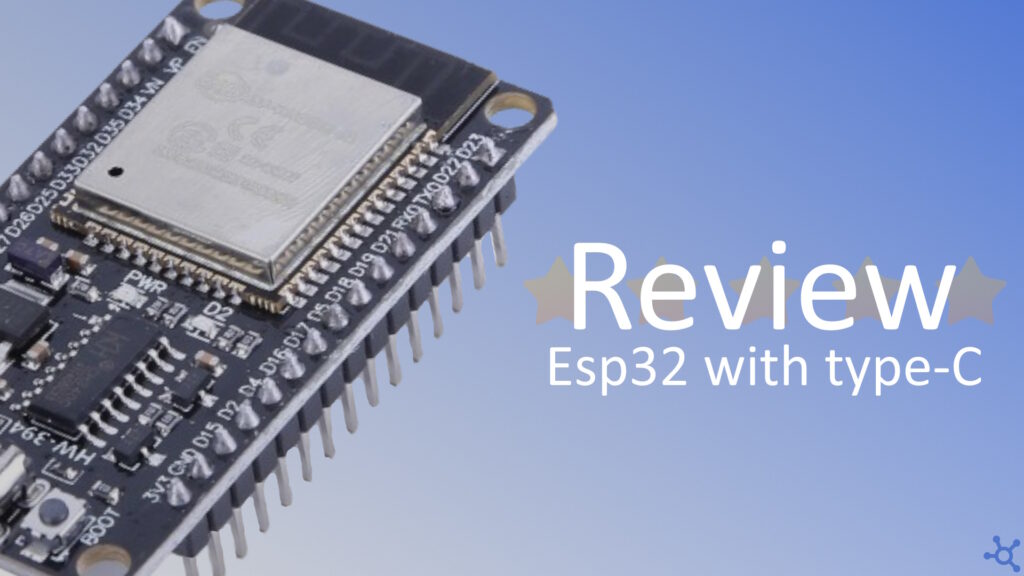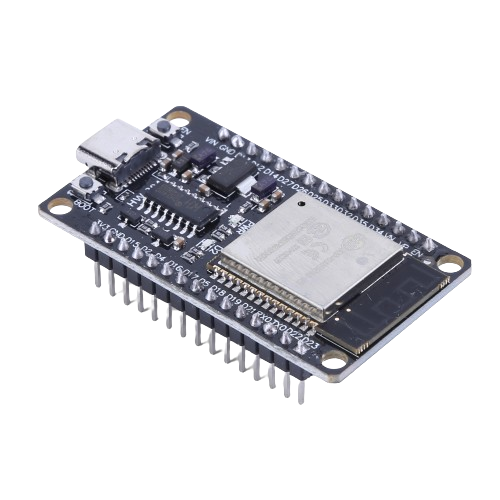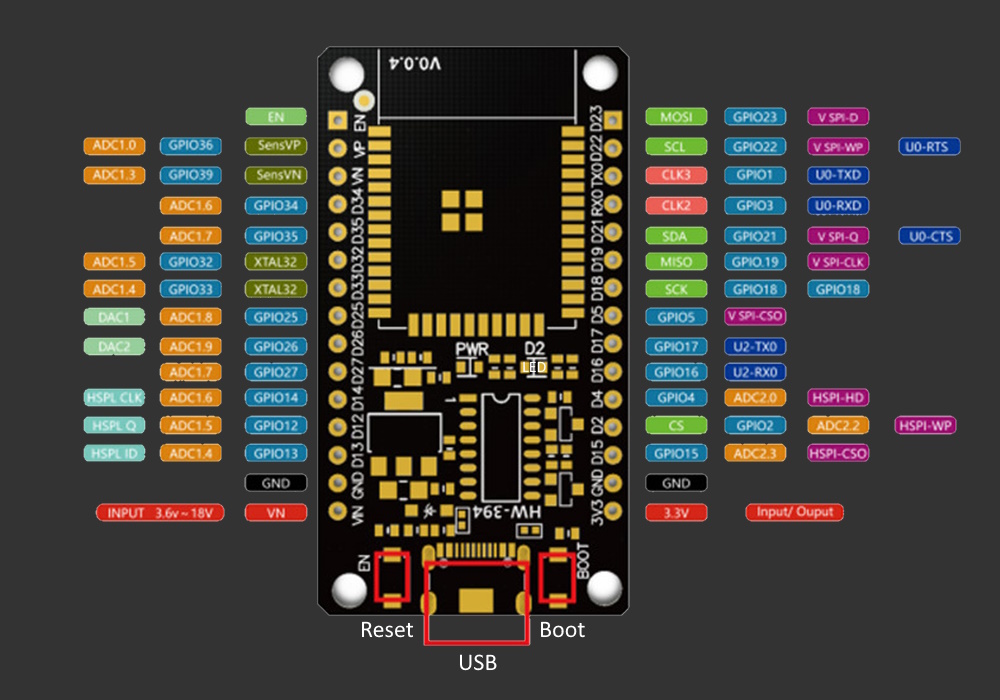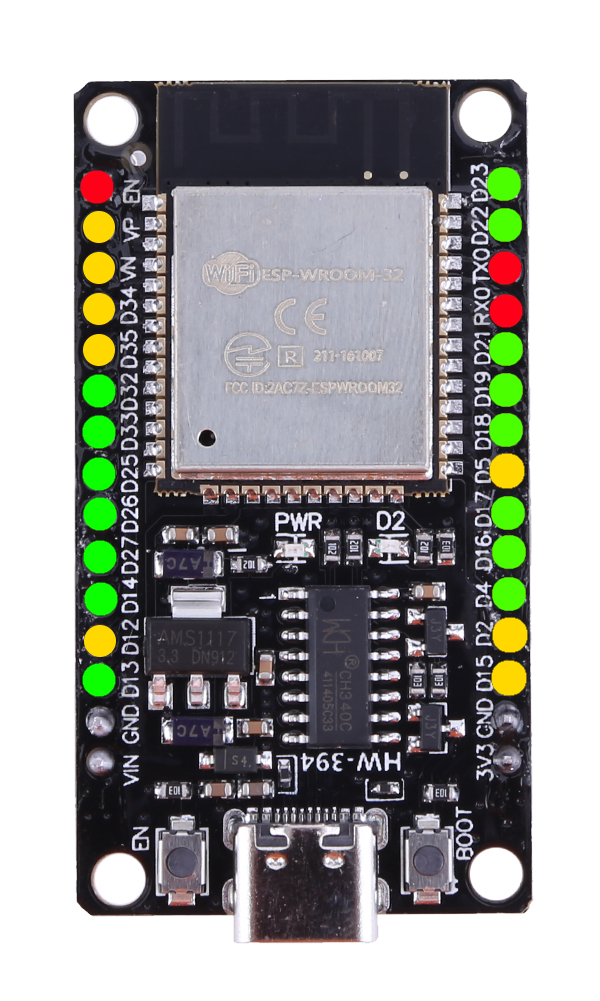0 - Introduction
In this article we will review an Esp32 with Type-C, if you like the product and want to support us, you can buy it via one of the links available throught the article.
If you are starting to get into the world of microcontrollers you probably already know about arduinos, but what if i told you that you can have the ease of use of the arduino, with a faster processor, wifi and bluetooth and much more, all that while still being usually cheaper? That’s the Esp32, the perfect microcontroller for IoT and anything network related!
1 - Specifications
Type:
Esp32 with included Antenna (no antenna port)
Similar in PlatformIO:
NodeMCU-32S
Processor Freq:
240MHz
Memory:
4 MB
SRAM:
512 kB
Input Voltage:
3.6V – 18V
Attention: the 5V pin outputs the same voltage as input, NOT ALWAYS 5V!! Also, don’t connect via USB if you are powering it via the 5V pin with more than 5V.
Max Current p/pin:
40 mA
WiFi Protocol:
802.11B/G/N (2.4Ghz and 5Ghz)
Bluetooth Protocol:
v4.2 BR/EDR and BLE (Classic and Low Energy)
Crypto HW Acceleration:
SHA / RSA / AES / RNG
Data Interfaces:
SPI / I2C / I2S / SDIO / UART / TWAI (CAN)
Some of these don’t have a pin in the devboard, but will be listed anyways so that you can be aware of their existance and purpose.
- GPIO_0: must be HIGH during boot and LOW for programming.
- GPIO_1 and GPIO_3 are used by the USB port, and are needed for programming, i would not use them directly.
- GPIO_2 is connected to the onboard LED.
- GPIO_5 must be high during boot.
- GPIO_6, 7, 8, 9, 10 and 11 are connected to the flash memory.
- GPIO_12 must be low during boot.
- GPIO_15 prevents the startup log if pulled LOW.
- GPIO_34, 35, 36, 39 are input only.
Here you can see in a more visual way, which pins are safe, require attention or shouldn’t be used:
2 - The Good
What i find the best in this particular model is the type-C port, it is very convenient to just be able to pick any of the cables i have at home and plug it in.
The other main positive, for me, is the input voltage, as this model has an AMS1117 regulator chip and can accept a very wide range of voltages, and it is so wide that you can plug it in directly to your car’s 12V rail (ususally 12.6V – 14.4V) or a 4s LiPo battery (14.8V – 16.8V) without having to worry too much about it. Just be very carefull as to not connect any 5V accessories or your computer to the 5V rail or usb while it is being powered by, for example a 4s LiPo.
Besides those two features it is like any other Esp32 wroom / node mcu model.
3 - The Bad
There is no model in platformIO that has a 1 to 1 pin-out with this model, only a similar one.
4 - Should you buy it?
Yes, 100%. It is usually very cheap so even if you don’t like it, you won’t lose much. Also, the only downside isn’t even a big problem, you just have to use ‘GPIO_NUM_X’ instead of, for example, the SPI macros.
I also recommend the breakout board as it is very good for prototyping with accessories without a breadboard.
If you are interested in this Esp32 you can buy it here on Aliexpress as well as the breakout board. I’ve personally used them in many hobby projects and couldn’t be happier, also, if you need a tutorial on how to setup a environment for the Esp you can check this article.
As always, thanks for reading and stay tuned for more tech insights and tutorials. Until next time, and keep exploring the world of tech!



